Storming of Ecuador TV station by armed men has ominous connection: Mexican drug cartels
MEXICO CITY – People across the U.S. and world saw shocking video of more than a dozen armed, masked men storming an Ecuadorian television station during a live broadcast last month.
The crime was linked to a prison escape of a local gang leader, but there is a more familiar villain behind the scenes: Mexican drug cartels.
“We are on air, so they know that you cannot play with the mafia,” one of the hooded men was heard saying during the assault at the Guayaquil station on Jan. 9.
Ecuador is no stranger to powerful gangs fighting for territory while also fighting the state. But in recent years, the infiltration of Mexican drug cartels into the local criminal gangs has marked the beginning of a new era of violence in the small South American country.
A boiling point:U.S. retirees found affordability in Ecuador. What happens when crisis hits?
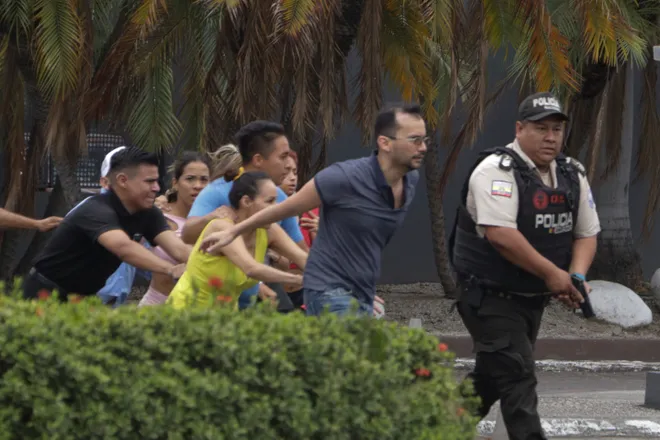
There's a central reason behind the cartels' interest: Ecuador is a primary drug distribution point to the rest of the world. And its main product, cocaine from its neighbors Colombia and Peru, often ends up in the U.S. and Europe.
Following the recent unrest, new President Daniel Noboa declared an “internal armed conflict” and ordered national security forces to neutralize 22 armed groups classified as “terrorists.”
The U.S. government issued a statement following the violent events condemning the attacks: “We reaffirm our commitment to a close partnership with Ecuador, including in the fight against criminal organizations.”
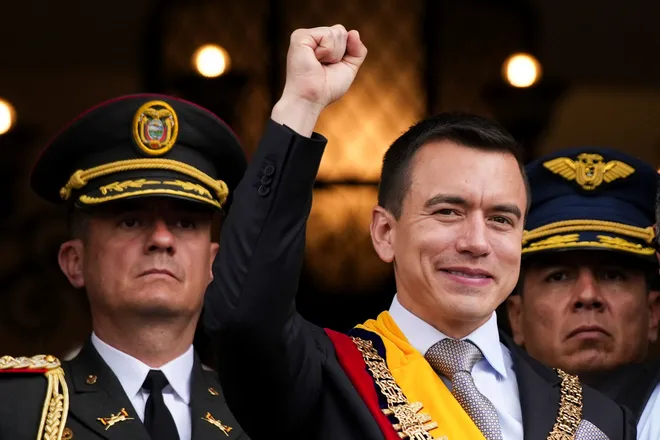
Car bombs, prison riots, an increase in murders, threats to the media, weapons and explosives are part of the current narrative of violence in the country, but it's a slate already well known in Mexico.
Local gangs join with Mexico's two biggest cartels
The prison escape of two prominent Ecuadorian gang leaders triggered the recent escalation of violence and led Noboa to declare a national state of emergency.
The leader of Los Choneros, Adolfo Macías Villamar, better known as "Fito," escaped prison prior to being transferred to a smaller and more secure location, the police said.
He was serving a sentence of 34 years for organized crime, drug trafficking and homicide.
When the news of his escape spread, riots occurred in multiple prisons and corrections officers were taken hostage.
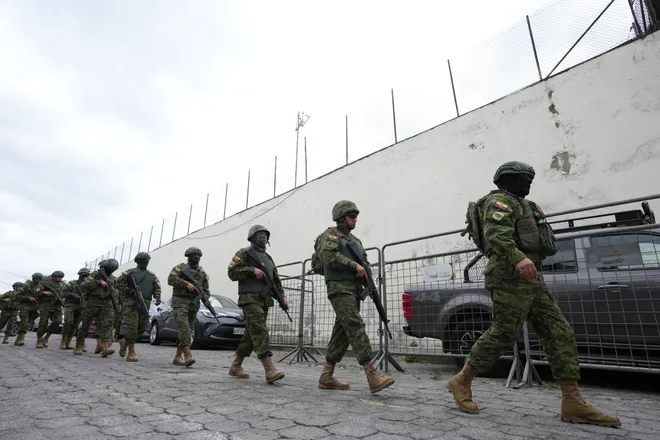
Massacres and riots are getting more common in Ecuador because of the ongoing turf wars between drug traffickers. In July, a riot left 31 inmates dead, authorities said.
Los Lobos, the second primary criminal gang in Ecuador with more than 8,000 members, according to Insight Crime, began as a dissident of the Choneros. Its leader, Fabricio Colón Pico, aka “Capitán Pico,” also escaped prison in early January.
Both the Choneros and Lobos, among other criminal gangs, are fighting to control the cocaine routes in the country. Experts say they have existed for a long time but evolved since Mexican cartels allied with them.
“In Ecuador, these groups have existed for decades, but with the arrival of the Mexican cartels, such as the Sinaloa Cartel and the Jalisco New Generation Cartel (CJNG), they made local alliances, and in this way, they became their operating arms for drug trafficking,” security analyst David Saucedo said.
The two Mexican super-cartels are fierce rivals.
Saucedo said the cartels provide resources, drugs, weapons and personnel.
“Cartels have funded the small Ecuadorian mafias when they were practically insignificant. They were actually gangs, but over time, they evolved and became mini cartels,” he said.
Guayaquil Port: Cocaine hub
Bordering the world's largest cocaine producers, Ecuador’s Guayaquil Port has become the “main logistics hub for cocaine going to Europe and the rest of the world,” according to a U.S. Office of International Narcotics Affairs report in 2022.
“A large part of the drug shipments leaves the port of Guayaquil to Central America and Mexico, as well. It is a well-connected port that does not have the controls that other ports have,” Saucedo said.
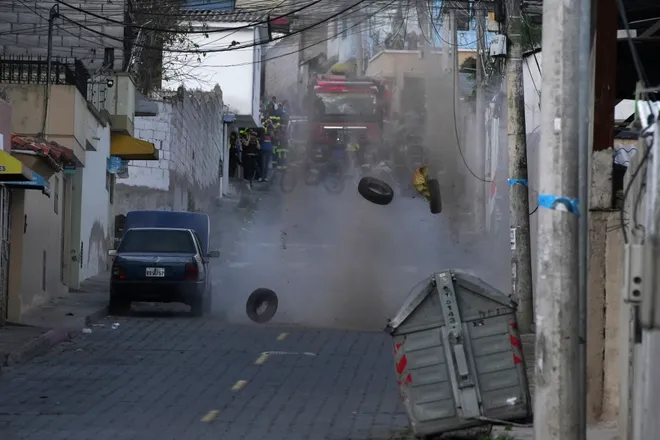
That’s the main reason cartels have been infiltrating local gangs in Ecuador, and, in turn, fueling the crisis of violence and prison unrest, experts say.
Professor Gilberto Aranda, of the University of Chile, said Ecuador went from being a point of drug transit to a place for drug redistribution.
“We could say that there are a series of ‘cartel branches,’ such as Sinaloa or Jalisco, in places like Ecuador where they create links with national organized crime to establish themselves, and this is not new, but it has been becoming more pronounced in recent years,” Aranda said.
According to Insight Crime, a think tank and media group that focuses on organized crime, cocaine takes two pathways through Ecuador – the Pacific route and the Amazon route.
“The Pacific route is largely supplied by cocaine produced in Nariño, the border department that has more coca than anywhere else in Colombia,” the report reads.
“The Amazon route is mostly supplied by cocaine from Putumayo, the Colombian department with the second highest levels of coca cultivation after Nariño, and leads through the Ecuadorean province of Sucumbíos.”
Saucedo said it will surely continue to be that way “because the Ecuadorian government has concentrated on combating the gangs that sell drugs in the streets, but they have not yet directed their efforts against the large drug shipments that are passing through Ecuador.”
A military movement to control criminal gangs
“The present and future of our country is at stake, and no act of terror will make us give up,” the head of Ecuador's armed forces, Rear Admiral Jaime Vela Erazo, said in a televised message following the unrest.
“Be fully convinced that your armed forces and National Police will fulfill our oath to defend you with our lives, if necessary,” the admiral said.
Weeks after the unrest, the government said it has detained more than 2,000 people since the president declared the internal armed conflict to crack down on criminal gangs.
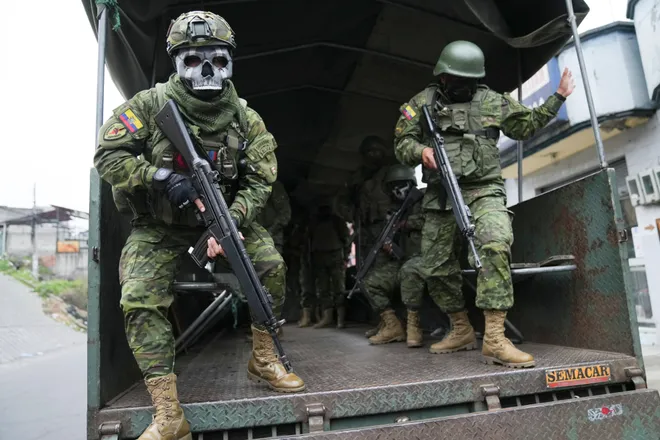
"In Mexico, the armed forces have been used for a long time to confront crime, but in other countries like Ecuador, we could say this is an emergency measure," Aranda of the University of Chile said.
“You need to wonder if the armed forces have already adopted all the standards that allow them in some way to transform from an external defense apparatus to an internal drug repression apparatus.”
Aranda added that the transformation is not automatic and requires a wholesale modernization that, in some cases, is not carried out, “which I understand because the situation is desperate, but the solution could eventually turn out to be worse than the disease.”
Critics have emerged over the government’s military response to combat the criminal groups, which is similar to the one implemented in Mexico, with little success.
“We know that there is a discussion among experts where it is shown that putting the military on the streets to deal with a conflict of this type in the medium and long term only makes the problem worse and lengthens it,” said research professor Andres Chiriboga at the Paris Institute of Political Studies.
“That’s the first concern. The government's response, with goodwill, will generate a prolongation of the conflict instead of finding a solution that is faster in the short term,” Chiriboga said.
'A cancer spreading throughout Latin America'
In Ecuador, the influence of Mexican cartels has been evident for a while.
Decapitated bodies hanging from bridges can be found in some cities, a cartel staple in Mexico.
The Mexican cartels are colonizing different countries, carrying out their business model and replicating more or less the same thing that exists in Mexico, said Saucedo, the Mexican security analyst.
“The corruption of the authorities, bribes to local authorities, recruitment of local mafias, the corruption of the penitentiary system, the open war against national states,” Saucedo listed.
In August, armed men assassinated presidential candidate Fernando Villavicencio after leaving a campaign rally in Quito, leaving several others injured.
According to his campaign adviser, he had received previous death threats from drug cartels, including the Sinaloa Cartel. A month prior to his murder, Agustón Intriago, the mayor of the city of Manta, was also assassinated.
“The drug trafficking business has been moving from spaces that were traditional, such as Colombia and Mexico. They have been moving towards spaces with less resistance where the presence of cartels is more novel, and therefore there is no institutional framework and legislation to confront them,” Aranda said.
Saucedo agreed, saying this phenomenon could be replicated in other countries, raising the alarm in other Latin American governments.
“Mexican drug cartels are a cancer that is spreading throughout different nations in Latin America, and there is no real plan to confront the criminal mafias that are threatening several Latin American governments,” Saucedo said.
Prosecutor Cesar Suarez, in charge of investigating the latest high-profile drug-related cases in Ecuador, including the attack on the TV studio, was shot dead in Guayaquil while driving to a court hearing earlier this month, Attorney General Diana Salazar said.
Police continue to investigate who killed Suarez. Salazar said on X, formerly Twitter, that they will remain strong for him.
“It’s impossible not to be broken by the death of a colleague in the fight against organized crime. We will remain firm in his name: for him, for the country, for justice. Thank you for your work, Cesar. Rest in peace.”
Karol Suárez is a Venezuela-born journalist based out of Mexico City. She is a contributing writer to The Louisville Courier Journal, part of the USA TODAY Network.
Disclaimer: The copyright of this article belongs to the original author. Reposting this article is solely for the purpose of information dissemination and does not constitute any investment advice. If there is any infringement, please contact us immediately. We will make corrections or deletions as necessary. Thank you.




